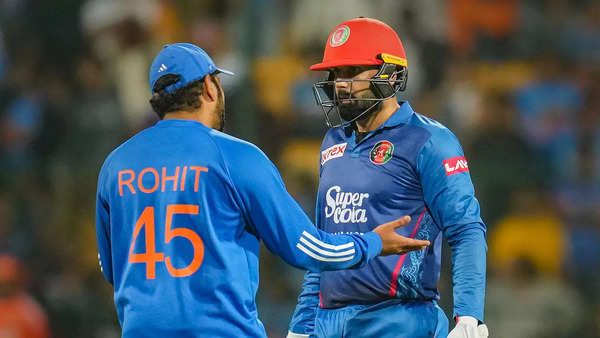[ad_1]
As it turned out, Rohit’s exit was a strategic move.With India needing two runs from one ball to win at that point, Rohit wanted to capitalize on the better running abilities of the third batter, Rinku Singh, to secure the extra run. However, the intrigue heightened as Rohit returned to open the innings alongside Rinku in the second Super Over.
The rules stipulate that once a batsman is declared retired out, they cannot come out to bat again if another Super Over is required to determine the match’s outcome. So how did Rohit manage to bat again in the second Super Over?
A match official clarified that if the opposition captain or coach has no objection, a batsman can bat again in the second Super Over.
India’s head coach, Rahul Dravid, drew a parallel to Ravichandran Ashwin, who executed a similar tactical swap during an IPL 2022 match between Rajasthan Royals and Lucknow Super Giants.
“It was Ash-level thinking. Taking himself out was Ash-level thinking,” Dravid told the host broadcaster.
Nevertheless, Afghanistan coach Jonathan Trott suggested that there was minimal communication between officials and players as the entire episode unfolded.
“I have no idea (whether Rohit retired hurt or out). Has there ever been two Super Overs? That’s what I am trying to say. We keep setting these new rules. What I am trying to say is we kept testing the rules, we kept testing the guidelines,” said Trott in the post-match press meet.
Trott emphasized his argument by pointing out that the rule regarding the use of bowlers in Super Overs was not adequately communicated to them.
Afghanistan had intended to deploy Azmatullah Omarzai in the second Super Over. However, as the pacer had already bowled in the first Super Over, he was ineligible for a second stint.
“It was not communicated (the rule). We wanted Azmat to bowl the second over again, but Fareed (Ahmad) bowled a great over. But these things will be explained and done in writing in the future.
“If those are the rules, that’s great. I just think we had a good game, and I don’t think that (rules) should be the talking point,” he added.
Nevertheless, Trott, an experienced coach and a former esteemed player, might have overlooked the fact that the Super Over rules have been in effect since 2019, eliminating the need for external reminders.
Another contentious moment occurred in the game when Afghan batters Mohammed Nabi and Rahmanullah Gurbaz managed to run three after wicketkeeper Sanju Samson’s throw ricocheted off Nabi’s legs. The incident contributed to Afghanistan scoring 16 in the first Super Over. Rohit promptly conveyed his dissatisfaction to Nabi and the umpires.

(PTI Photo)
However, Dravid did not make a significant fuss about it.
“It’s part of the game. There will be some frustrations and at times things happen, but it’s okay. Obviously, the ball hit the non-striker, and then it moved.
“In the first T20, I think the ball hit the back of one of our batsmen and we ran as well. So I think there’s nothing to read into it. Nothing in the rules stops you from running those runs. So that’s fine,” he said.
(With PTI inputs)
[ad_2]
Source link
